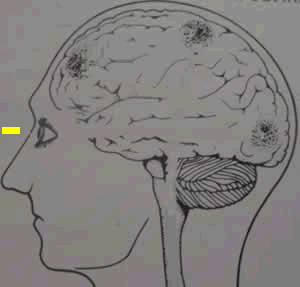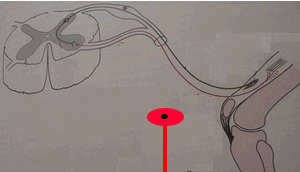Humans respond in two ways. Conscious responses are by the brain while involuntary responses (reflexes) are very simple in nature and bypass the brain.
For example, take the cricketer
facing a ball traveling at 120km/hr. The following sequences take place
in a conscious and deliberate manner.
-The eye receives the vision of the ball traveling towards the player.
-The eye sends signals to the vision processing centre of the brain.
-After the image has been processed its time to make some decisions.
-Signals are sent to the thinking area of the brain for a decision.
-The decision is conveyed to the motor area of the brain that coordinates
the muscular contractions.
-Instructions are sent to the appropriate muscles.

Conscious responses take a great deal of processing that appears effortless.

Reflex arc
Reflex actions involve no more than three neurons. The signals travel to the spinal cord and back to the muscle which contracts quickly. This is called the reflex arc.
Try the exercise below.
You will need a ruler and some reward such as a ten dollar note. Hold the ruler vertically and ask a friend to place their index finger and thumb around the ruler 7cm from the top, as shown on the right.
Ask your friend to grab the ruler as it falls. If they succeed they get the ten dollars. Don't worry they haven't a chance. Release the ruler without a warning and watch. No matter how hard they concentrate it is impossible to catch the ruler. Why?
